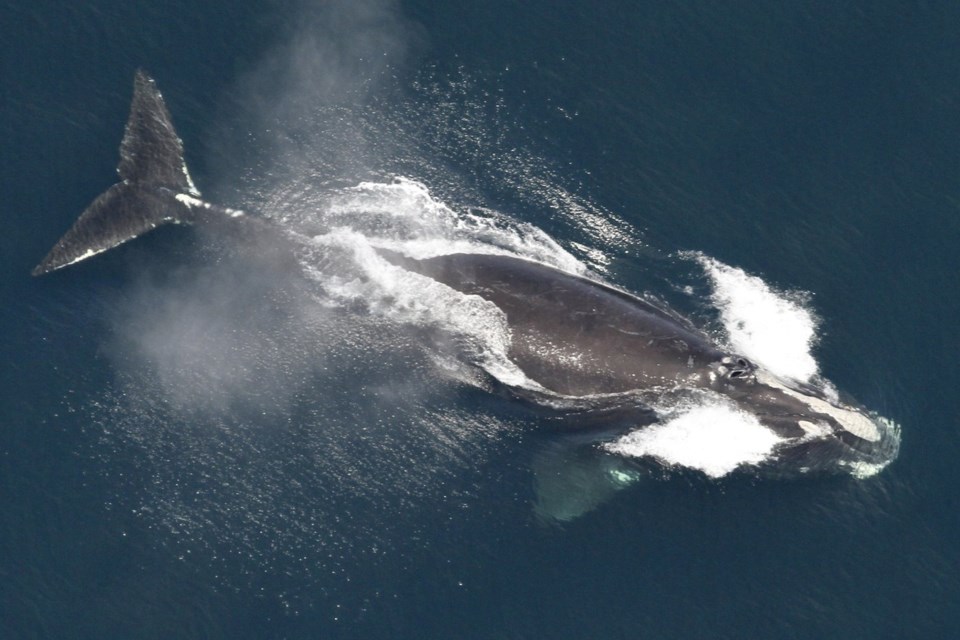HALIFAX — The tiny population of critically endangered North Atlantic right whales has long had to deal with inbreeding. But a new scientific study, led by researchers at Saint Mary's University in Halifax, is reporting an encouraging finding.
Even though inbreeding appears to be limiting the number of calves born each year, it's not having an impact on genetic diversity — a trait that is key to the survival of any species.
"The fact that they're retaining that genetic diversity is a really good sign for their future," said Carla Crossman, a PhD candidate in the university's biology department. "We're not losing genetic diversity as fast as we might otherwise. (But) we don't know why."
Last October, the North Atlantic Right Whale Consortium estimated there were 356 North Atlantic right whales left on the planet.
The new peer-reviewed study, published Wednesday in the journal Royal Society Open Science, says researchers initially found that most female North Atlantic right whales were not giving birth to calves every three years, as females in the much larger southern population typically do.
"The interval is much higher across the (northern) population," Crossman said, adding that some mature females in the North Atlantic have never given birth.
The research team, which included scientists from other parts of Canada and from the United States, determined through genome sequencing that each female's level of inbreeding had nothing to do with their ability to give birth.
"There wasn't a clear relationship between how inbred a female was and her reproductive success," Crossman said. "But what we did find is that all of the individuals in the population had more genetic diversity than would be expected, given (the size of) the population."
The team reported another key finding based on past research on known mother-calf pairs and known mother-father-calf triads: highly inbred calves weren't showing up in the population. The researchers believe inbred fetuses are dying in the womb.
"We think there's an increased rate of fetal loss due to inbreeding," Crossman said. "This does explain some of the poor reproductive success that we're seeing .... Whatever the mechanism, it is maintaining genetic diversity in the population because all of the calves are more genetically diverse than expected."
The "mechanism" has probably enabled the whales to avoid harmful mutations caused by inbreeding, she said. "That means they can persist a bit better at a small population size."
The team's findings could be used to "recalibrate" the expectations of those in charge of managing the North Atlantic right whale population, she said.
Despite the good news about genetics, Crossman said none of these findings will mean much unless there's a substantial decrease in the number of whales killed by ship strikes and entanglements with fishing gear, which are the leading causes of death for this species.
Last fall, the North Atlantic Right Whale Consortium — a group of scientists, industry members and government officials who study the whales — said the latest data showed the number of human-caused injuries was on the rise.
As of 2022, deaths were not outpacing births — a good sign — but conservationists remain worried the species is still slipping closer to extinction because many of these injuries will lead to deaths, while other injured whales may not be able to reproduce.
So far this season, five entangled North Atlantic right whales have been spotted in Canadian waters, including an adult male known as Dropcloth, spotted Saturday off the northeastern coast of New Brunswick near Miscou Island.
This report by The Canadian Press was first published Aug. 1, 2024.
Michael MacDonald, The Canadian Press



